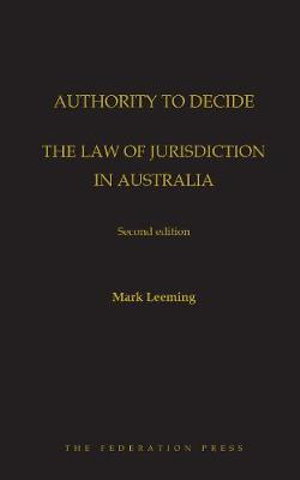
PublishedFederation Press, February 2020 |
ISBN9781760022075 |
FormatHardcover, 368 pages |
Since its initial publication in 2012, Authority to Decide has established itself as the pre-eminent resource for Australian practitioners and courts dealing with questions of jurisdiction. It has been cited regularly in judgments of the High Court of Australia, and in dozens of first instance and appellate judgments of other courts.
Some of propositions advanced in the first edition have subsequently received judicial support, helping to shape the development of the law.\n\nEach chapter in the second edition has been thoroughly updated to incorporate a wealth of new case law. The coverage of the work has also expanded. Highlights include:\n
\n
Updated analysis of the investment of jurisdiction by the Commonwealth cross-vesting legislation, including its effect in bankruptcy, the jurisdiction of State and Territory courts in "special federal matters" and a new section on appeals which lie from State and Territory courts to federal courts.
\n
Extensive analysis of developments in jurisdictional error, including the High Court judgments in Hossain and SZMTA.
\n
Updated analysis of "accrued jurisdiction" (a term deprecated by the High Court in Rizeq v Western Australia) and the nature of decisions affected by jurisdictional error (including by reference to State of New South Wales v Kable).
\n
New sections on the jurisdictions of the New South Wales Court of Appeal and Court of Criminal Appeal.
\n
\nAuthority to Decide enables the reader to gain a deep and nuanced understanding of the complex legal principles governing issues of jurisdiction. It engages with the academic literature, but at its heart it remains a very practical work, offering guidance both to practitioners seeking to invoke the jurisdiction of a court, and to the judges exercising it.

